 |
 |
 |
| |
Biomarkers of Microbial Translocation and Macrophage Activation Are Associated with Progression of Atherosclerosis in HIV Infection: ACTG NWCS 332/A5078 Study
|
| |
| |
CROI 2012 Seattle March 5-8, Reported by Jules Levin
from Jules: at this year's CROI there was a major focus on complications with a big emphasis on inflammation, activation & biomarkers of these concerns, this reflects the growing attention inflammation & activation and its effect on the patient's risk for developing complications as it relates to aging & complications. This is a great development, of course the hope is for a much better understanding of why patients are experiencing so many complications, so much earlier than in HIV-negs, and maybe interventions, ways to prevent this. Also noteworthy, other major focuses at this year's CROI included prevention, PrEP with TDF, new HCV therapies in studies in coinfected patients, several new HIV drugs including Gilead's integrase elvitegravir & ViiV's dolutegravir; and also 'cure/eradication received quite a lot of attention, new to this year's conference. There is a lot of new research attention and a $12 million new NIH grant dedicated to researching HIC cure & eradication. very exciting CROI this year!
link to webcast:
http://app2.capitalreach.com/esp1204/servlet/tc?c=10164&cn=retro&s=20481&&dp=player.jsp&e=16637&mediaType=podiumVideo
Theodoros Kelesidis*1, O Yang1, M Kendall2, H Hodis3, and J Currier1
1Univ of California, Los Angeles, US; 2Harvard Sch of Publ Hlth, Boston, MA, US; and 3Univ of Southern California, Los Angeles, US
Background: The relationship between dysfunctional HDL cholesterol (dys-HDL), novel inflammatory markers (secreting receptor activator of NF-kB ligand; RANKL), markers of immune activation (sCD14), markers of bacterial translocation (lipopolysaccharide; LPS), and progression of atherosclerosis in HIV infection have not been defined.
Methods: We used stored samples from a prospective 3-year study (ACTG 5078) of carotid intima-media thickness (CIMT) to assess the relationship between RANKL, LPS, sCD14, dys-HDL, and progression of CIMT in HIV+ (HIV RNA <500 copies/mL; protease inhibitor [PI] n = 29; NNRTI n = 26) vs HIV- subjects (n = 36) matched for age, smoking status, and race. Only subjects with stored specimens at weeks 0 and 96 or 144 were included. Dys-HDL was assessed using a novel fluorometric assay based on the oxidation of dihydrorhodamine 123 (DHR) by HDL. RANKL and sCD14 were assessed by ELISA; LPS by the limulus amebocyte lysate assay. The association of each biomarker with the yearly rate of change in CIMT (based on specimen dates and 48-week year) was assessed using repeated measures analysis.
Results: Median (IQR) of markers are summarized below. In multivariate analysis within the HIV+ subjects, the yearly rate of change in CIMT increased by 15.2 mm/y (95%CI 0.66 to 29.8, p = 0.04) for every 10 mg/mL increase in week 0 sCD14 and increased by 0.49 mm/y (CI 0.18 to 0.81, p = 0.003) for every 100 pg/mL increase in week 0 LPS, after controlling for week 0 HDL. We saw no significant association between dys-HDL and RANKL levels and CIMT progression in this small study.
Conclusions: The results of this study are among the first to suggest that biomarkers of microbial translocation (LPS) and markers of activated macrophages (sCD14) are associated with increases in the yearly rate of change in CIMT in HIV infection.
slides provided by authors Kelesidis, Currier.
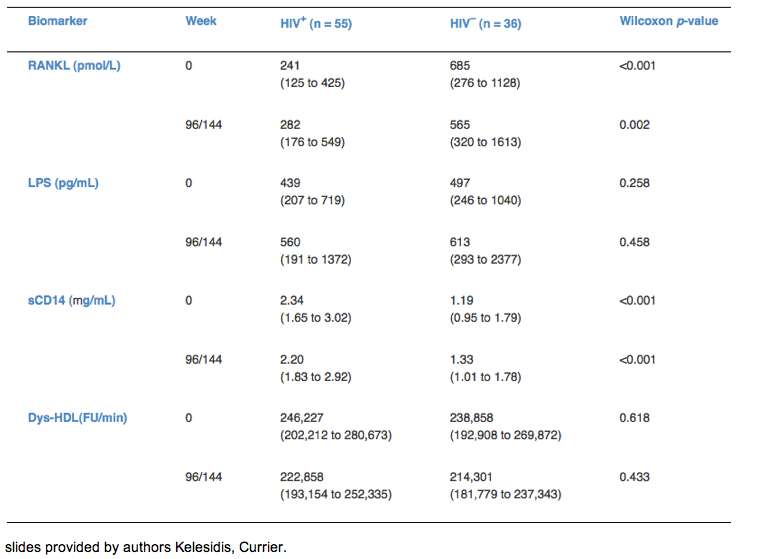
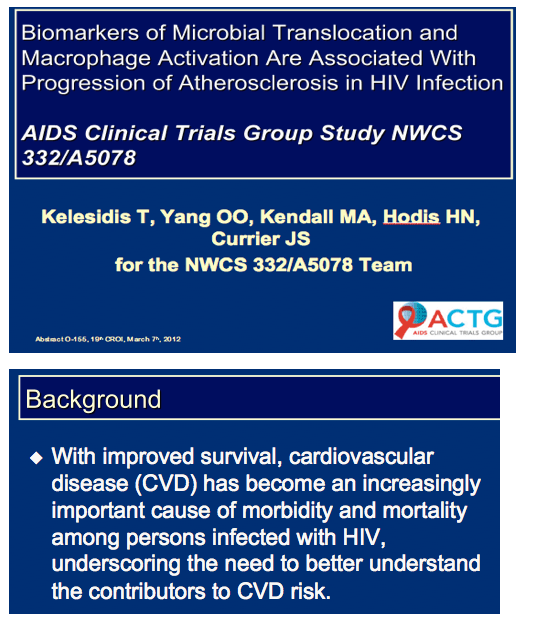
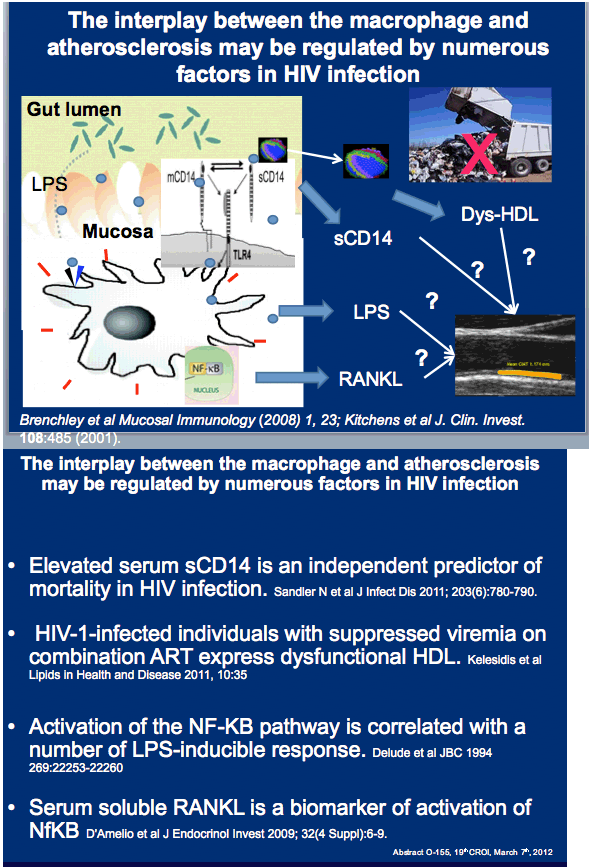
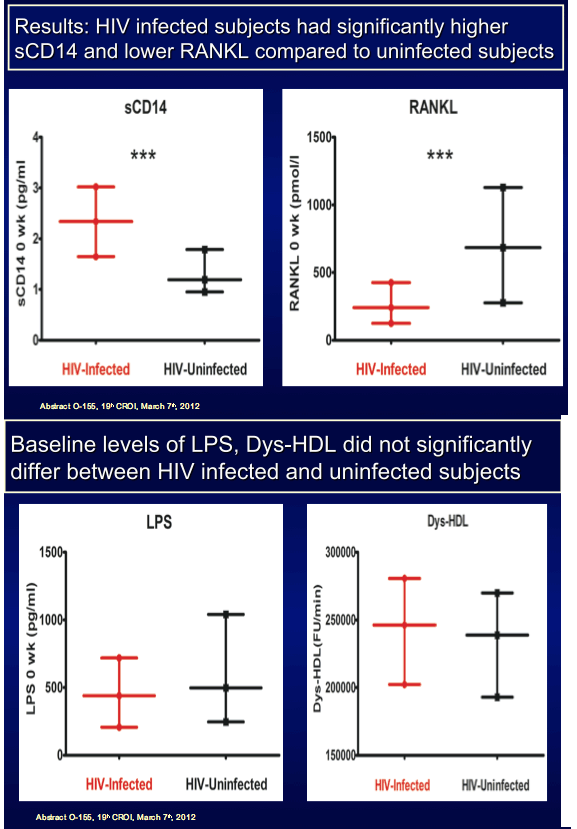
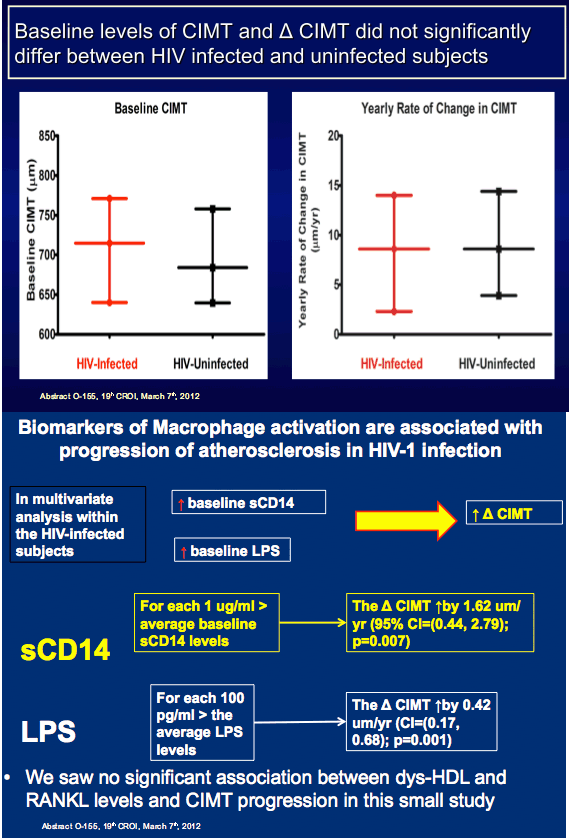
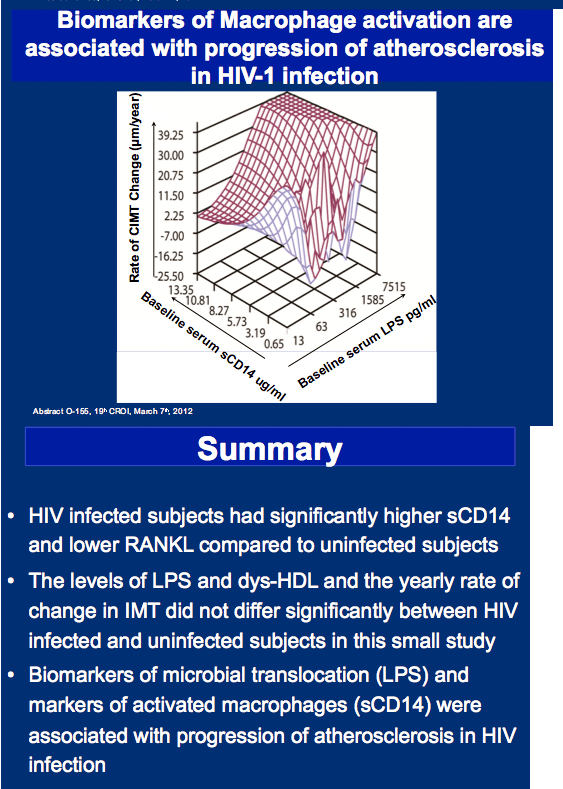
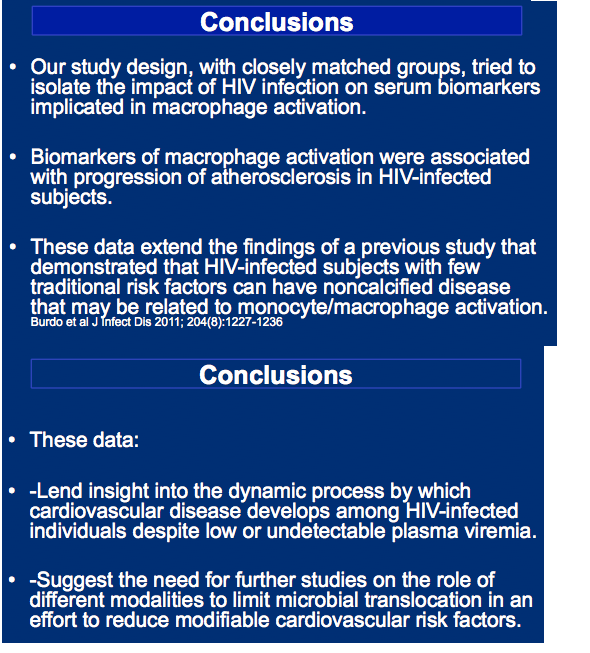
|
| |
|
 |
 |
|
|